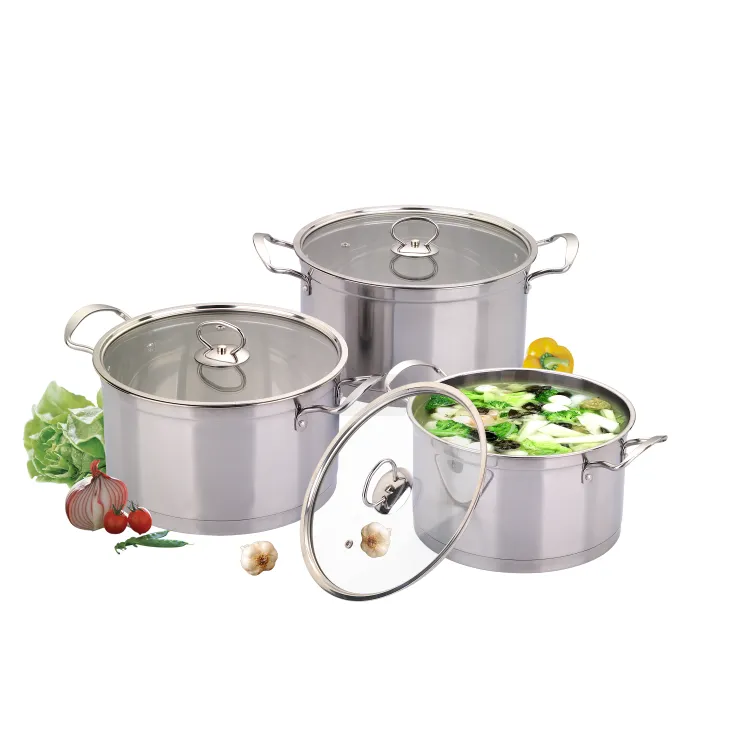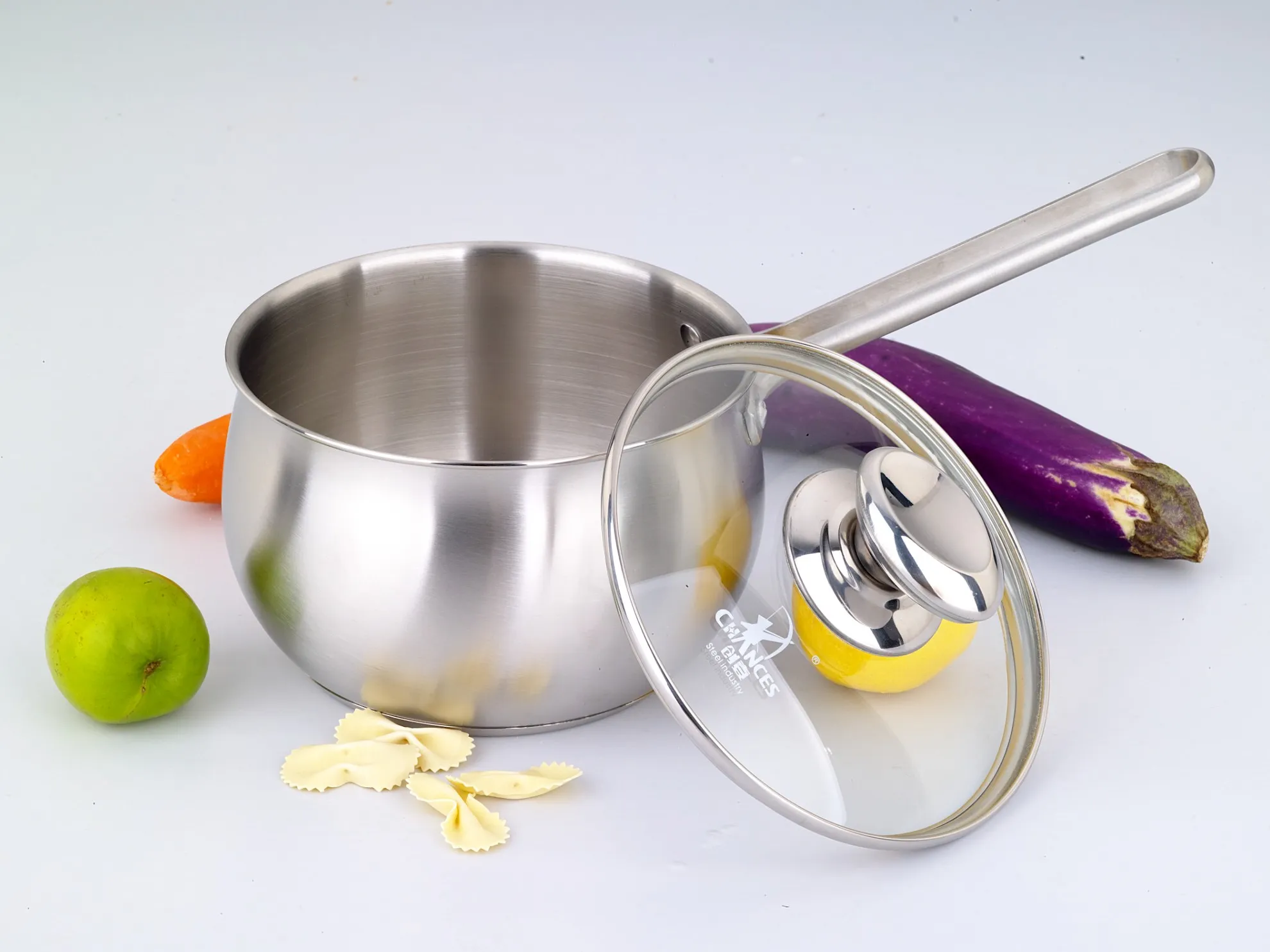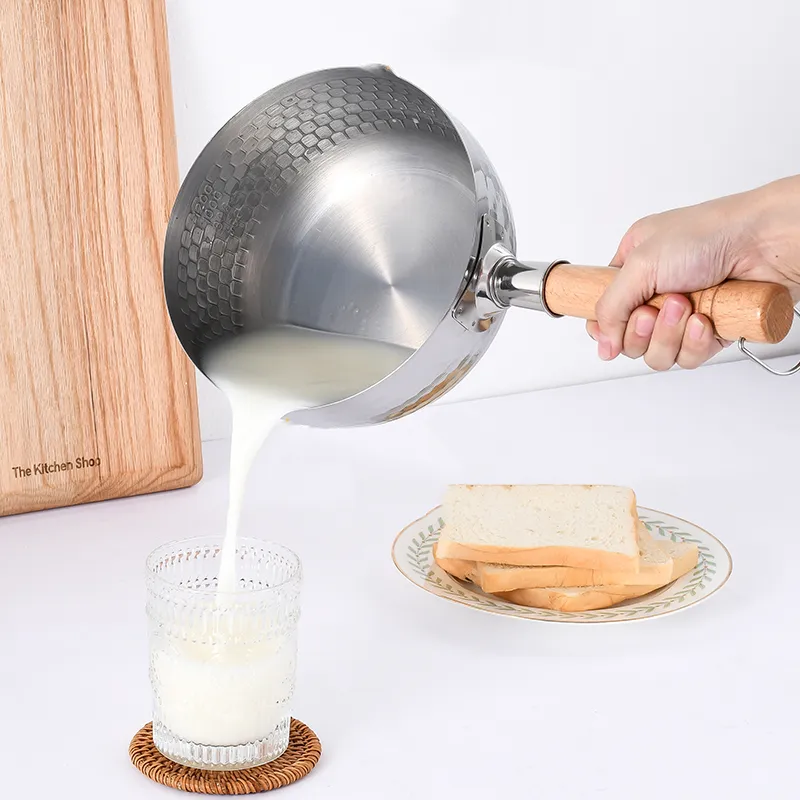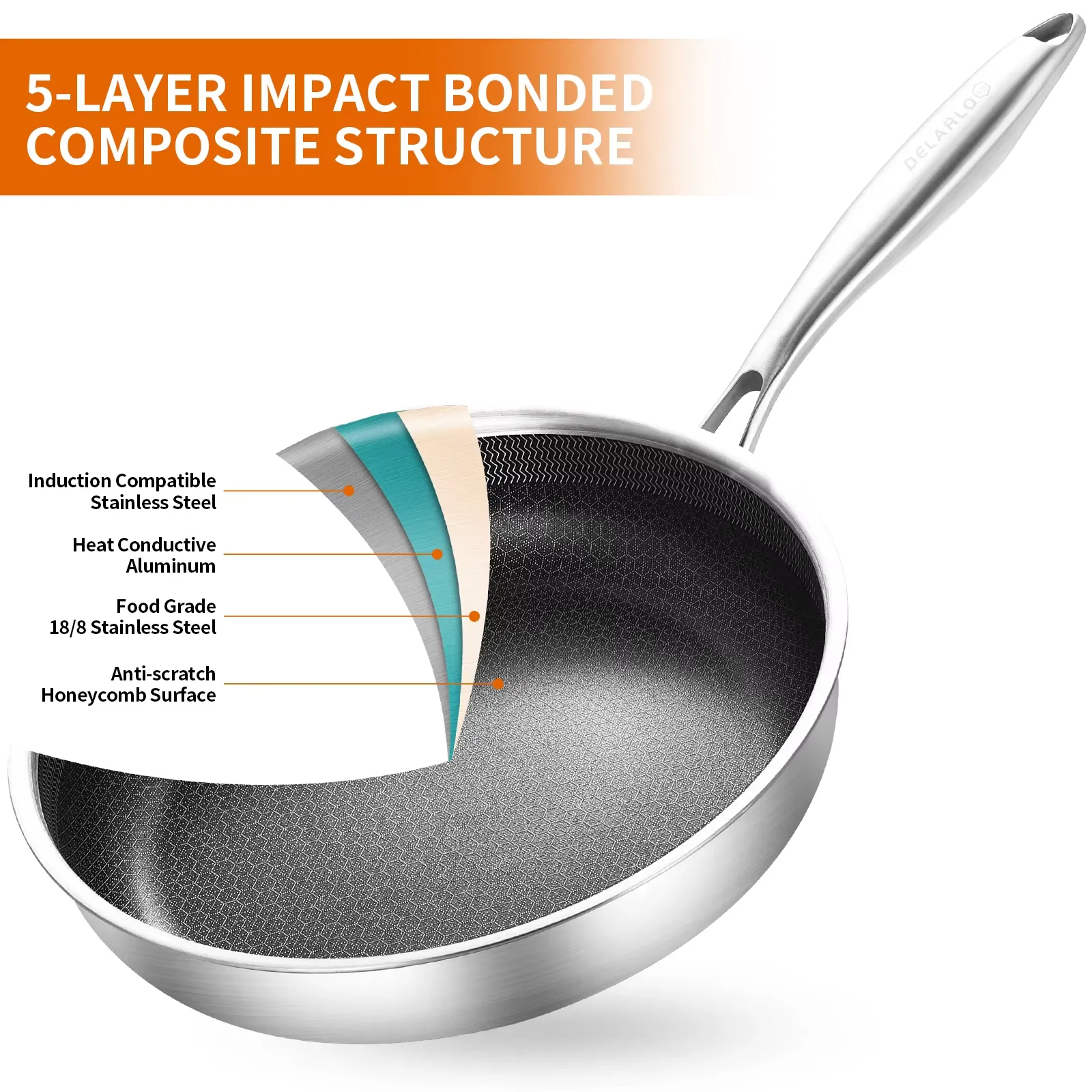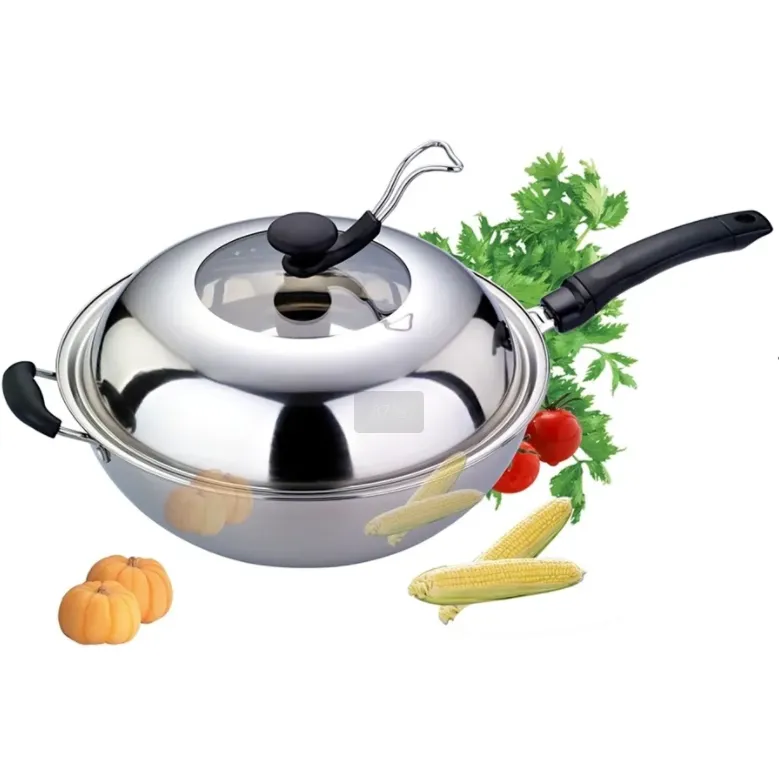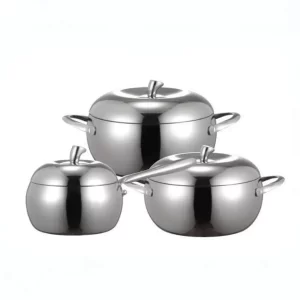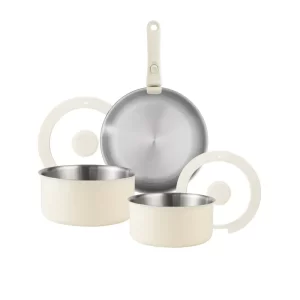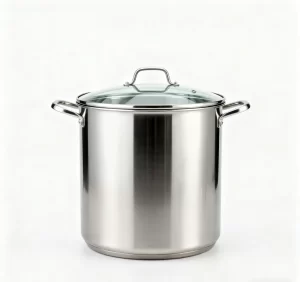Les ustensiles de cuisine en acier inoxydable de haute qualité sont une combinaison de "matériaux appropriés, d'une structure stable, d'une conception thermique précise et d'un contrôle de qualité rigoureux et cohérent". Pour les acheteurs B2B, "bon" ne se réfère pas seulement à la performance, mais aussi à la répétabilité, à la conformité, à un coût total de possession prévisible et à un service après-vente fiable.
Les chances, a fabricant d'ustensiles de cuisine en acier inoxydableGrâce à l'acier inoxydable, nous sommes parvenus à un équilibre entre la sécurité alimentaire, la conductivité thermique, la durabilité mécanique, la facilité d'entretien et le coût. Aujourd'hui, nous allons parler de ce qu'est un bon ustensile de cuisine en acier inoxydable. En outre, nous proposons solutions personnalisées en matière d'ustensiles de cuisine en acier inoxydable pour votre entreprise et votre marque.
Table des matières
ToggleDéfinition de base : ce qu'un "bon" ustensile de cuisine en acier inoxydable doit offrir
De notre point de vue, un ustensile de cuisine en acier inoxydable de haute qualité doit répondre aux normes de ces cinq principes :
- Sécurité alimentaire et non-réactivité : stable au contact des aliments acides, sans produire de substances de lixiviation nocives.
- Chauffage uniforme et réponse thermique contrôlable : moins de points chauds et un contrôle prévisible de la température.
- Durabilité mécanique : résistance à la déformation, aux bosses et aux rayures.
- Facilité d'entretien et de réparation : facilité de nettoyage, longue durée de vie et remplacement aisé des pièces.
- Conformité et traçabilité : Les matériaux et les lots d'usine sont traçables, ce qui permet de répondre aux exigences réglementaires telles que FDA/LFGB/EC.
Si un produit ne répond pas à l'un de ces critères, il entraînera des coûts de garantie, de remplacement ou de réputation pour les clients.
La métallurgie : quelles qualités d'acier inoxydable et pourquoi ?
Le choix de la bonne qualité d'acier inoxydable est fondamental, c'est-à-dire celle qui convient aux circonstances de votre cuisine.
Grades couramment utilisés et recommandés
304 (18/8 ou 18/10) - Qualité courante : environ 18% de chrome, 8-10% de nickel. Bonne résistance à la corrosion, non réactif aux aliments, polissable, adapté à la surface intérieure et au matériau principal des ustensiles de cuisine, avec un bon rapport coût-efficacité.
316 (qualité marine) - qualité haut de gamme/résistante aux acides et au chlore : contient du molybdène 2-3%, qui peut mieux résister au chlorure et aux environnements acides. Convient aux lignes haut de gamme dans les zones côtières ou celles qui sont fréquemment exposées à des ingrédients acides ou à des fruits de mer.
430 (ferrite) - couche magnétique pour l'adaptation à l'induction : environ 16-18% de chrome, sans nickel. La résistance à la corrosion est inférieure à celle de 304, mais elle est magnétique. Elle est couramment utilisée dans les couches extérieures ou inférieures des structures composites multicouches pour réaliser l'adaptation des fours électromagnétiques.
Série 200 - utilisée occasionnellement pour des produits très bon marché tels que les assiettes et ustensiles de cuisine divisés ; non recommandée pour les scénarios d'utilisation haut de gamme ou intensive, car la faible résistance à la corrosion et les stratégies de substitution du nickel affectent la stabilité des performances.
Recommandations pour la sélection des matériaux
Surface en contact avec les aliments : priorité à 304 ou 316 ; en cas d'environnement chloré ou très acide, il est préférable d'opter pour 316.
Compatibilité inductive : Veiller à ce que la couche inférieure contienne des matériaux magnétiques (tels que 430) ou utiliser un film magnétique ; les composites multicouches peuvent résoudre efficacement les problèmes de compatibilité et de conductivité thermique.
Traçabilité : Le rapport d'essai de l'usine (MTR) est requis pour chaque lot de matériaux afin de garantir la traçabilité entre la composition du matériau et le lot - il s'agit d'une exigence fondamentale pour la gestion de la chaîne d'approvisionnement interentreprises.
Construction et génie thermique : les moyens de construire la performance
L'acier inoxydable n'est pas du tout le meilleur conducteur de chaleur. Une bonne ingénierie des ustensiles de cuisine compense cela par un revêtement multicouche et une géométrie appropriée.
Le nombre de plis et sa signification
- Triple couche - acier inoxydable/noyau en aluminium/acier inoxydable : un bon équilibre entre performance et coût. La surface est en acier inoxydable et l'âme en aluminium est utilisée pour la conductivité thermique. La couche extérieure en acier inoxydable est belle et durable, et convient à la plupart des scénarios professionnels et domestiques.
- Cinq couches/sept couches (multicouches) - alternance de couches d'acier inoxydable et d'aluminium (ou de cuivre) : masse thermique plus importante et meilleure stabilité de la température ; mais plus lourd et plus cher, il convient aux cuisines commerciales soumises à des charges élevées ou à des exigences strictes en matière d'inertie thermique.
- Couche intermédiaire en cuivre - Le cuivre possède une excellente conductivité thermique, mais il est coûteux et nécessite une couche d'isolation pour éviter tout contact direct entre le cuivre et les aliments. Les produits haut de gamme sont utilisés en raison de la demande de réactivité extrême.
Entièrement revêtu ou à fond plat
- Entièrement vêtu (d'un côté à l'autre)Le noyau conducteur est collé le long des parois et de la base, ce qui permet de chauffer uniformément les parois et le fond de l'ustensile. Préféré pour les casseroles et les ustensiles de cuisine où la chaleur latérale est importante.
- Fond de disque / base encapsuléeLe disque est constitué d'un noyau conducteur uniquement dans la base (disque collé sur les côtés en acier inoxydable). Moins chers et plus légers, ils conviennent à de nombreuses utilisations, mais sont moins performants pour chauffer uniformément les parois.
Épaisseur et conception du fond
- L'épaisseur du fond (épaisseur totale des couches intermédiaires et épaisseur du matériau de base) détermine la masse thermique et la résistance à la déformation. Paramètres commerciaux typiques : L'épaisseur totale des trois couches est d'environ 3 à 5 mm ; les couches multiples professionnelles peuvent atteindre 5 à 8 mm.
- Réactivité thermique : La couche centrale la plus fine se réchauffe et se refroidit rapidement, ce qui facilite le contrôle de la température ; une couche centrale plus épaisse offre une bonne isolation et convient pour la friture, les grillades et les repas à forte charge de travail. Sélectionnez l'épaisseur appropriée en fonction du scénario d'utilisation.
Processus de collage
- Collage par laminage : La méthode la plus courante consiste à réaliser une liaison métallurgique entre les métaux par pressage à chaud. Un contrôle strict des processus de chauffage et de recuit est nécessaire pour éviter la délamination.

- Soudage laser ou TIG : utilisé pour les poignées, les bords et les points de soudure afin de garantir l'étanchéité et la stabilité structurelle. Éviter la délamination ou les fissures visibles dans la zone entièrement recouverte.
Conception et ergonomie : l'importance des détails
Poignée : Il est recommandé d'utiliser des poignées ergonomiques creuses ou tubulaires en acier inoxydable fixées par des rivets pour réduire le transfert de chaleur et améliorer l'équilibre. Les rivets doivent être en acier inoxydable et bien scellés. La poignée soudée a un bel aspect, mais elle n'est pas facile à réparer.
Couvercle étanche : Un couvercle étanche assure une bonne isolation et facilite l'extraction du jus ; le trou d'aération permet d'éviter les débordements. Les couvercles en verre conviennent à un usage domestique, tandis que les couvercles en acier inoxydable, plus durables, sont recommandés pour les cuisines commerciales.
Bouche et balance inversées : La bouche inversée et la balance sont des modèles pratiques couramment utilisés par les chefs cuisiniers pour améliorer leur efficacité.
Traitement de surface : Le brossage (ponçage) peut dissimuler les rayures ; la surface miroir semble plus haut de gamme mais est sujette au vieillissement. Le degré de polissage de la surface intérieure affecte l'adhérence et les performances de nettoyage.
Mesures de performance : Comment tester la qualité en temps réel
Essai de répartition de la chaleur
Un moyen simple mais efficace de mesurer la qualité d'un ustensile de cuisine en acier inoxydable consiste à vérifier l'uniformité de la répartition de la chaleur. Placez l'ustensile sur la cuisinière et saupoudrez-le d'une fine couche de farine ou de sucre. Au fur et à mesure que la casserole chauffe, observez si l'ingrédient change de couleur de manière uniforme sur toute la surface. Les ustensiles de cuisine en acier inoxydable de qualité supérieure doivent chauffer uniformément, sans créer de points chauds susceptibles de brûler les aliments de manière inégale.
Test de réponse magnétique
Un test rapide consiste à utiliser un petit aimant. Placez l'aimant contre le fond ou les parois de l'ustensile de cuisine. Si l'aimant adhère fermement, l'ustensile contient une quantité suffisante d'acier inoxydable ferritique, nécessaire à la compatibilité avec les tables de cuisson à induction. Une réponse magnétique faible ou irrégulière peut indiquer un matériau de qualité inférieure qui réduit les performances.
Contrôle du poids et de la qualité de construction
Une autre méthode pratique consiste à évaluer le poids et la structure de l'ustensile de cuisine. Les ustensiles de cuisine en acier inoxydable de haute qualité doivent être robustes et bien équilibrés dans la main. Les casseroles extrêmement légères peuvent chauffer rapidement, mais elles se déforment souvent à haute température et ne parviennent pas à conserver la chaleur efficacement. D'autre part, les ustensiles de cuisine trop lourds peuvent être difficiles à utiliser. Un bon produit en acier inoxydable atteint le juste équilibre entre l'épaisseur, la durabilité et la facilité d'utilisation.
Résistance aux taches et aux rayures
La durabilité est une caractéristique essentielle des ustensiles de cuisine en acier inoxydable. Pour le vérifier, essayez de cuisiner des aliments acides tels que de la sauce tomate ou des plats à base de citron, qui peuvent parfois provoquer des décolorations ou des taches sur les ustensiles de cuisine de qualité inférieure. Vous pouvez également passer délicatement une cuillère ou une spatule sur la surface pour vérifier la résistance aux rayures. L'acier inoxydable de haute qualité doit conserver sa finition polie sans réagir aux ingrédients acides ni présenter d'usure visible.
Suggestions applicables (par type d'acheteur)
Restaurant/Organisateur : Choisissez un emballage 304 à 5 couches ou à 3 couches épaisses, avec des poignées rivetées renforcées et des couvercles épais ; donnez la priorité à une conception anti-gauchissement et réparable.
Cuisine d'hôtel/institutionnelle : Trois couches entièrement recouvertes 304, compatibles avec les cuisinières à induction ; les dimensions standardisées facilitent la gestion des stocks ; nécessite une certification NSF/sécurité alimentaire.
Vente au détail/consommateur : Spécification à trois niveaux (3,5-4 mm), mettant l'accent sur l'apparence et les instructions d'utilisation, complétées par des directives de nettoyage et d'entretien visant à réduire les mauvaises utilisations.
Marché d'exportation : indiquer la conformité avec les réglementations de l'UE/FDA/LFGB/REACH et fournir le RMP avec les marchandises.
Malentendus courants et clarifications
- Plus il y a de couches, mieux c'est. "Pas nécessairement". Le nombre de couches doit correspondre au type de matériau et à l'utilisation prévue. Trois couches conviennent dans la plupart des cas ; le cinquième/septième étage convient aux cuisines professionnelles qui nécessitent une plus grande inertie thermique.
- Plus il est épais, mieux c'est. Une épaisseur trop importante peut réduire la vitesse de réaction, augmenter le poids et le coût. Il est plus important d'optimiser l'épaisseur en fonction des besoins de cuisson.
- L'acier inoxydable n'est absolument pas réactif. Cependant, les alliages de mauvaise qualité ou les contacts à long terme avec des acides élevés et les dommages de surface peuvent entraîner la migration d'ions métalliques à l'état de traces.
À propos de Chances
Chances - Votre fabricant de confiance d'ustensiles de cuisine en acier inoxydable
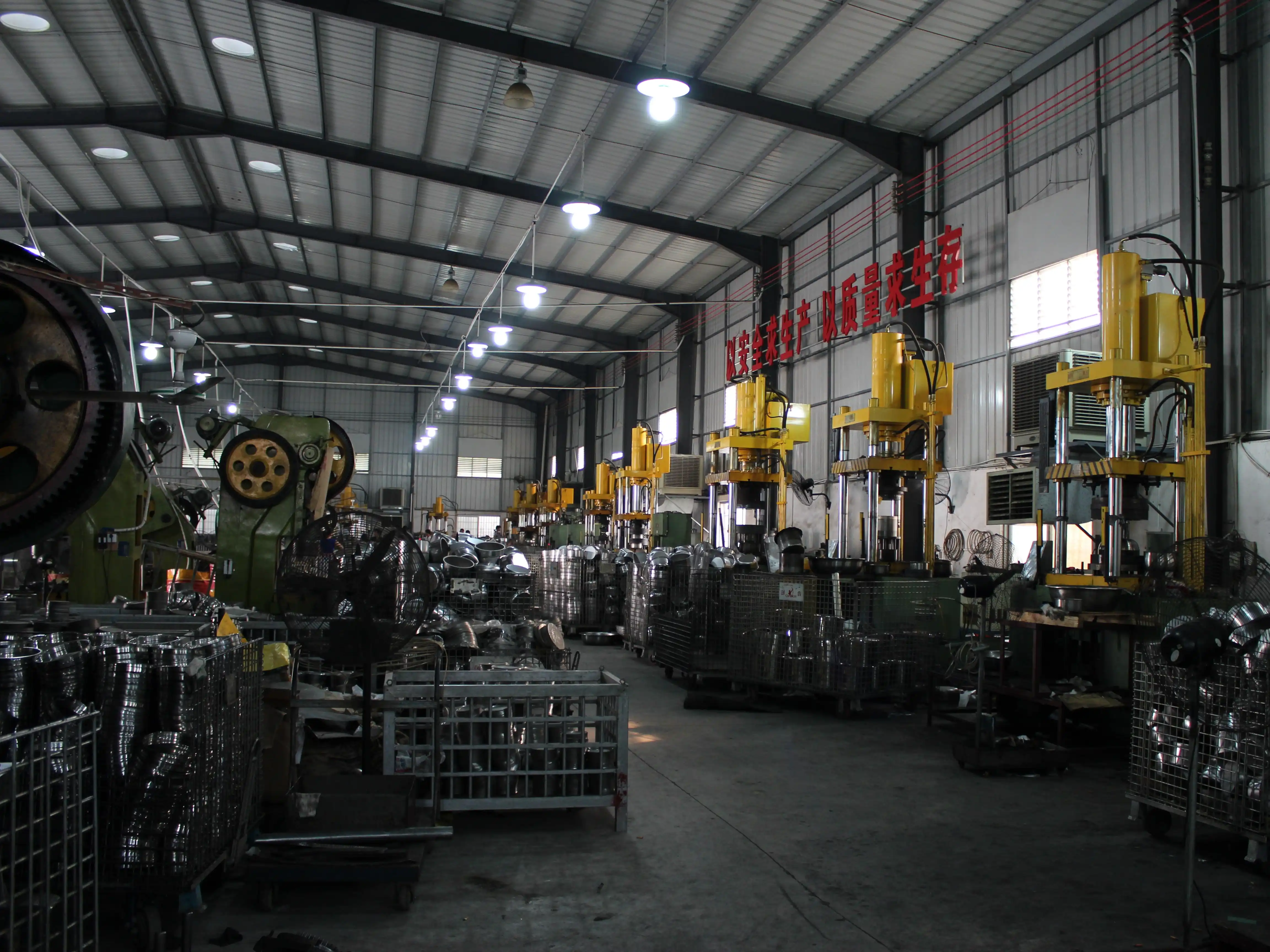
Nous sommes spécialisés dans la fabrication d'ustensiles de cuisine en acier inoxydable de première qualité, notamment des casseroles, des poêles et des woks, en mettant l'accent sur une utilisation quotidienne durable.
En tant que fabricant professionnel d'ustensiles de cuisine en acier inoxydableNous nous engageons à respecter la philosophie "sécurité dans la production, longévité dans la qualité". Chances se passionne pour la fourniture de solutions sûres et durables en matière d'ustensiles de cuisine en acier inoxydable.
Avec notre services d'ustensiles de cuisine en acier inoxydable sur mesureNous proposons des solutions OEM et ODM flexibles pour répondre aux exigences particulières de votre marque.
Contactez Chances dès aujourd'hui et commencez à créer des ustensiles de cuisine en acier inoxydable qui inspirent la confiance !
Conclusion
Les ustensiles de cuisine en acier inoxydable de haute qualité sont des produits élaborés, qui ne sont pas assemblés au hasard. L'équipe chargée des achats doit prendre des décisions fondées sur des données : clarifier la marque et la structure des couches, exiger des données sur les tests de performance, vérifier la traçabilité et collaborer avec les fabricants pour confirmer la cohérence des échantillons et des lots. Un approvisionnement rationnel peut faire des ustensiles de cuisine un atout à long terme, en réduisant les temps d'arrêt, en améliorant la stabilité des plats et en diminuant les coûts du cycle de vie.

